 |
 |
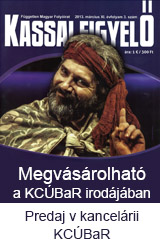 |
 |
 |
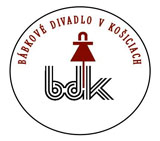 |
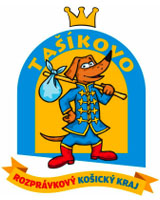 |
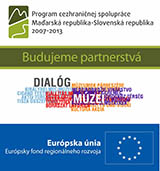 |
 |
 |
 |
 |
| T�to str�nka vznikla v r�mci predmetu Softv�rovy projekt na �stave Informatiky Pr�rodovedeckej fakulty Univerzity Pavla Jozefa �af�rika |
|
Opening Hours Obeservary Medzev |
|
|
Monday |
|
|
Tuesday |
8:00 – 14:00 |
|
Wednesday |
8:00 – 14:00 |
|
Thursday |
8:00 – 14:00 |
|
Friday |
8:00 – 14:00 |
|
Visits only on the basis of the agreement |
|
Entrence fee:
Daily observation during working days, lecture and other events
- Adults - 1 euro /per person
- Childern - 0,5 euro, or 1 cultural voucher /per person,we dont give change
from the cultural vouchers
Night observation and events during working days
- Minimum number of people: 3
- Adults - 2 euro/per person
-Childern - 1 euro/per person
- Family fee: 2 grown ups+ childern, without the count of the childern - 5
euro
- Group above 10 persons 1,5 eura/per person
Observation and lectures during the weekend
- Minimal count of persons: 5
- Adults and childern 3 euro/per person
- Family fee: 2 adults and childern, without the count of the
childern - 6 euro
- Group above 10 persons 2 euro/per person
Planetarium
- Maximal capacity: 20 persons on one lecture
- Adults: 1,5 euro /per person
- Childern – 1 euro, or 1 cultural voucher /per person,we dont give change from
the cultural vouchers
Openings, exhibitions and open days
- entrance fee provided by agreemend
tomas.cabala@kcubar.sk olga.ballaschova@kcubar.sk
Beginning in Medzev observatory dates from the 70th years, which was based astronomical cabinet. The current observatory was established in 1997. Organizes events for the public. It focuses on lectures, diafon bands, videos, public observation of the sun and sky. All these events are aimed at popularization of astronomy and related sciences. Activities of the observatory is also intended to organize leisure activities of children and youth, providing advisory and methodological assistance to schools, astronomy and other natural sciences ring, organizations and individuals.
In the field of professional and observation activity is focused on observing meteor showers, solar photosphere, variable stars, solar prominences, interplanetary matter (asteroids, comets), cover and eclipse, astronomy and current events.
We organize observation of the sky by an astronomical telescope, observing meteor showers visually and by radio observations of ion reflection signal from the trail. In the lecture hall in addition to traditional lectures and discussions are carried out various other meetings, goes out to meet wide range of people.
The Great Globular Cluster in Hercules (M13)
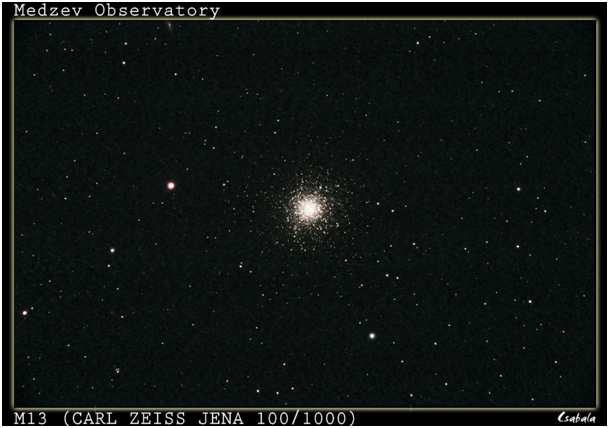
| Telescope: | 100/1000 Carl Zeiss JENA, NEQ6 |
| Guiding: | 70/500 refractor, Starshoot autoguider, PHD guiding |
| Camera: | Starshoot-PRO v2.0 CCD camera |
| Exposure time: | 10 x 300 sec |
| Date: | 2nd Aug 2011 |
| Location: | Medzev |
| Image processing: | Maxim DL, Photoshop |
Messier 13 (NGC 6205) is a globular cluster of about 300 000 stars in
the constellation of Hercules.
Is one of the best well-known clusters of the
northern hemisphere.
With
an apparent magnitude of 5.8, it is barely visible with the naked eye on a very
clear night.
Its diameter is about 23 arc minutes and it is readily viewable in
small telescopes.
M13 is 25,100 light-years away
from Earth.



